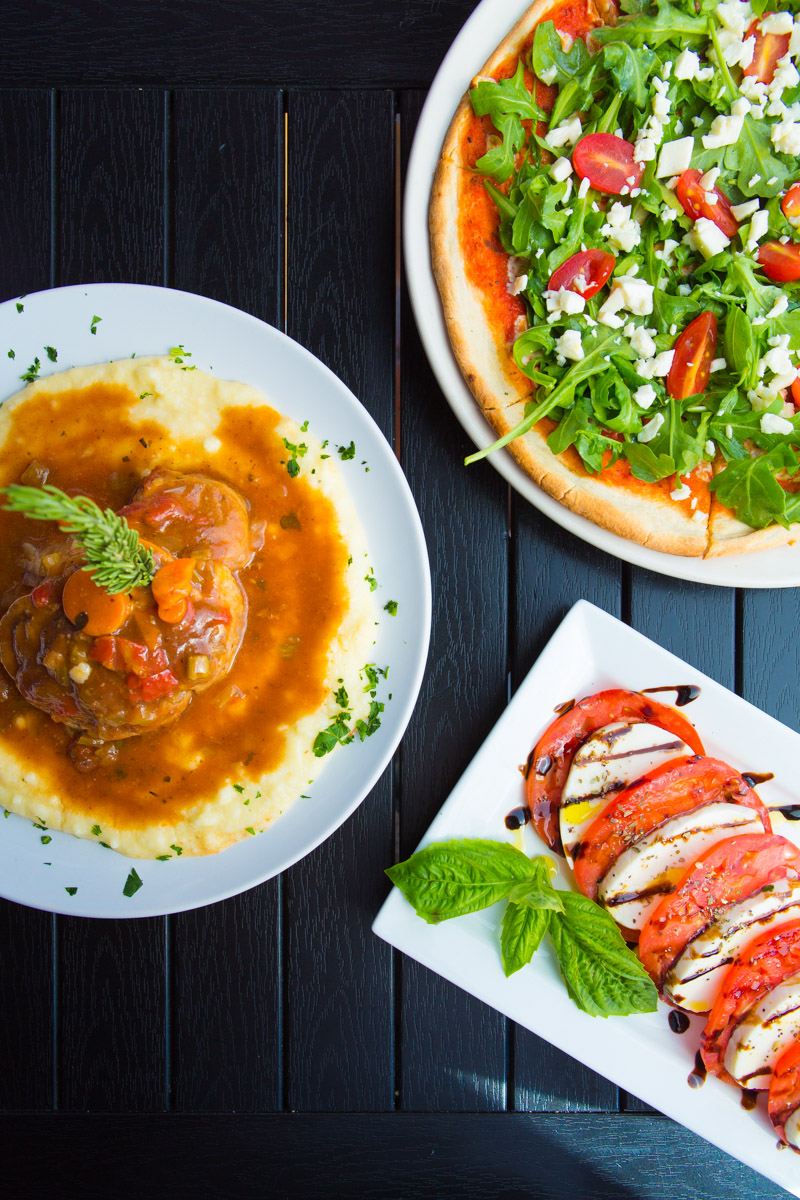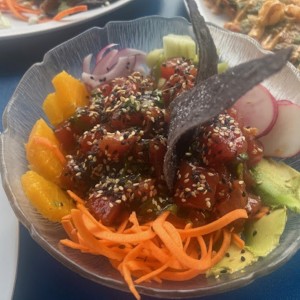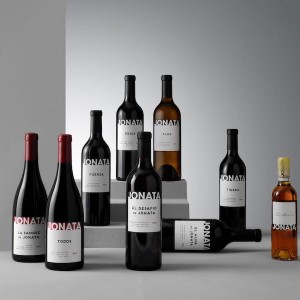When I moved to Sarasota two years ago, the first epicurean observation to slap me in the face was the sheer volume of Italian restaurants. I knew the city housed a great deal of Big Apple and Windy City transplants, but come on, every block? Could the market really float that kind of competition here? Well, a couple years later, I can tell you the answer is yes. But as with any proximity saturated in comparable product, there’s a subtle interplay of fiscal concessions, niche dishes, ambiance and the “it-factor” that translates to your overall dining experience more clearly than the nearly Xeroxed menu prevailing across the landscape.
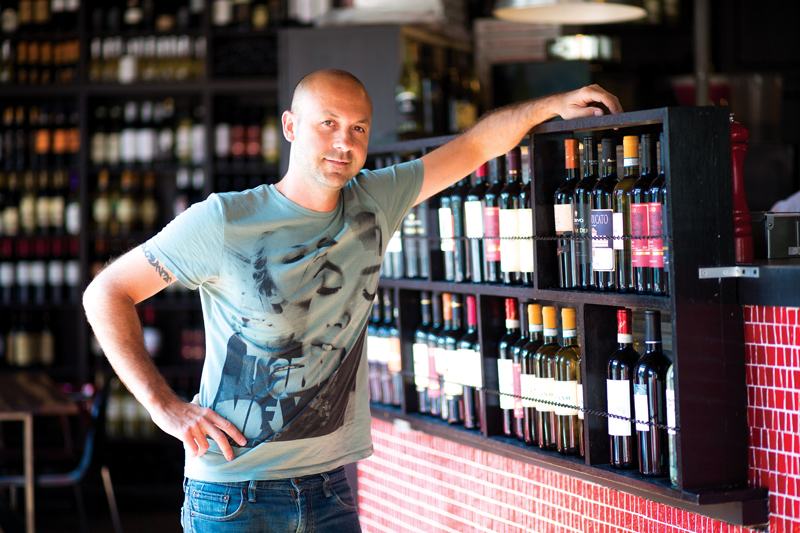
MATTO MATTO OWNER ALESSANDRO SETTIMI. PHOTO BY EVAN SIGMUND.
No disrespect to the outlying restaurants and excluding those proudly touting Brooklyn-Italian (like Mozzarella Fella), but being a resident of the downtown area, I trek out a few of the city proper experiences I felt worth wading through the rummage of marinara and Alfredo for. I unknowingly stroll into CasAntica (“old house” in Italian) on North Palm on a day of celebration. Master chef and owner Pietro Migliaccio is walking the Ercolani brothers, his new business partners, through the quaint restaurant shaking hands, patting backs, hugging with big Italian greetings and, best of all, divvying out free wine to the affectionate congratulators queued up for a few minutes of the trio’s time. When it comes to my turn, Migliaccio’s wife ushers me to a backroom with a large round table that eats up so much of the confined space it feels cumbersome but intimate, even important. The spirited trio enters with smiles, and the younger brother, Davide, sits across the table to my left, the older, Roberto, across straight in front and Migliaccio directly to my right so to lead the responses and translate for Davide, who is still working on his English.
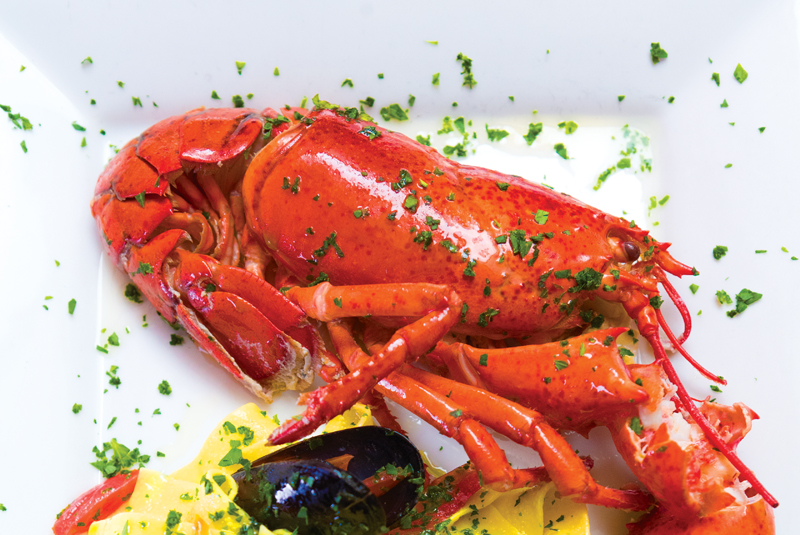
CASANTICA. PHOTO BY EVAN SIGMUND.
I ask Migliaccio what he suggests I eat, and without hesitation, he highlights his nodino di vitello, a 14-ounce veal chop with a 12-inch bone in. The dish has existed on every menu the chef ever had, including all 46 years in his Brooklyn spot, Mamma Lucia. The chop is milk-fed, and he serves it with a concentrated brown sauce that’s a beef base boiled with carrots, onions and seasonings for eight hours as well as with a medley of wild mushrooms: porcini, portabella, common and a touch of truffle oil.
Chef says the secret of the chop is simple: it needs the right amount of fat to cook well. It acts as the oil or grease, heats up and cooks the insides properly to give it the right taste. He trims it but leaves the necessary fat on the outside to protect the meat and seal it when it goes on the grill. He makes the sauce separately, mixes it with the meat, sautés it and serves. He brims with pride just speaking of it.
A man in his 60s, Migliaccio has a supremely kind, stoic presence and an air of experience and someone to be listened to, but this is underlined with a touch of somberness I didn’t expect amongst the celebration. After a little probing and subsequent reflection, he expresses a chef ages very fast in the kitchen, and he’s tired, not physically but mentally. He’s ready to step back from the grind and oversee, thus he brought in his friends and reputable Roman epicureans, the Ercolanis—Roberto a restaurateur and Davide a chef. After his long stint in New York, Migliaccio opened, and eventually sold, Café Gabbiano on the Key. The Italian restaurant is a personal, subtle entity, and the place just grew too much for him.
“In this industry,” he says, “if you want to have a good restaurant where you touch people, you must show the passion to them. They feel it, and it’s the people that make the difference between a restaurant and a place you really enjoy going. A restaurant is just business, and it’s competitive. You can’t invent the passion. You just have it and must maintain it all the time. When it gets too big, you lose touch, friends become just customers and you begin to lose it.” At its core, tonight’s celebration isn’t about the uniting of friends and vision but the preservation of passion and the art of their Italian restaurant.
Matto Matto is the newest Italian hot spot in town. Strategically located right at the end point with the fountain of Burns Court, the restaurant has a lot of tactile advantages working for it: locale, ambiance and an outdoor seating space rivaling any in the city. I’ve a firm grasp on the craft of open-air coffee drinking, and coupled with its importing the popular Fantini brand from Roma, the restaurant presents as fine an exhibition space as I’ve found.
Alessandro Settimi cracked into the food world in Canada with his chain of gelato spots called The Mad Italian. In the wake of its wild popularity, he sold the brand, signed a non-compete, dabbled in the idea of by-the-slice pizzerias and invested in some properties here in town. Thing is, he really liked it here and there was this cool spot open in Burns Court. You could say the rest is recent history.
Settimi offers the full gamut of Italian dishes, including a gnocchi made by his mother that’s supposedly to die for and an incredible tiramisu that I can’t get a peep out of him about. But falling back on his second love (after gelato), he’s clear that he considers pizza the place’s prestige. There’s a bit of a regional rivalry in Italy between Roma and Napoli concerning pizza dough and its preferred style. Matto Matto serves Roma-style that is thin-crusted and crispy. Napoli-style is thicker, doughier and has a large lip of crust ringing the circumference. Naturally, this utilizes far more yeast, which the Romans prosecute for sitting too heavy on the patron’s stomach and usurping the overall dining experience. Ninety percent of Italy prefers the Roman version, and for those of you hoping for the alternative, I’m sorry to disappoint.
I ask Settimi for his most popular pizza, which is the Matto Matto (mozzarella, tomato sauce, fresh basil, extra virgin olive oil topped with arugula and cherry tomatoes), and if he’d walk me through making it. Settimi reiterates there are a few tricks that bring it all together. First is the recipe, which has to be exact, and second is the ingredients, which he puts a great deal of effort into fresh sourcing. Third is allowing the dough to sit out for 12 hours to promote more yeast and activity within it before baking, and fourth is the oven.
A great deal of fuss can be made over whether a spot sports a wood oven or not, but Settimi dismisses this notion as the mere charm of aesthetics and reiterates that most of Italy cooks with electric. According to him, the defining factor is whether the pizza is cooked on stone. When dealing with the thinness of Roma-style, stone heats in a way that endows the pizza’s under-layer a firmness that brings out the flavor as well as providing perfect texture: the vital characteristics of a perfect Italian pizza. Proprietor Daniele Baroni of Mediterraneo believes the secret of great Italian food is simplicity and relying on good sourcing and an uncomplicated palate that allows true flavor to shine through. The place has dominated that side of Main Street for some time now, so his processing must translate well to the table.
The restaurant mostly presents dishes originating from the North, but in a country like Italy that’s been conquered by so many cultures, regional influences and neighboring specialties are bound to creep in. On weekends, it runs a special on branzino, or Mediterranean sea bass, one of the most popular fishes in Italy. Baroni buys the fish whole and has his kitchen chop, debone and skin it before throwing it on the grill with salt, pepper and a little lemon sauce.
One of the crowning dishes of Mediterraneo is its lasagna made in nearly true fashion of Bologna of the Emilia-Romagna region (home of the world’s most renowned lasagna) with homemade pasta and béchamel sauce—all that’s missing is the spinach-greenness.
The restaurant first makes the pasta then preps its ragu sauce by cooking a mix of veal, beef, pork and a little seasoning. Once prepped, it’s mixed with béchamel to bring together a creaminess and added layer of flavor. Baroni says that some patrons cast a wary eye upon the foreign (or native, depending on how you want to look at it) rendition of the dish. He’s had a few sent back without the experience of trying it, but for the most part, the food does its job of expanding customers’ palates, which is all Baroni can really ask.





